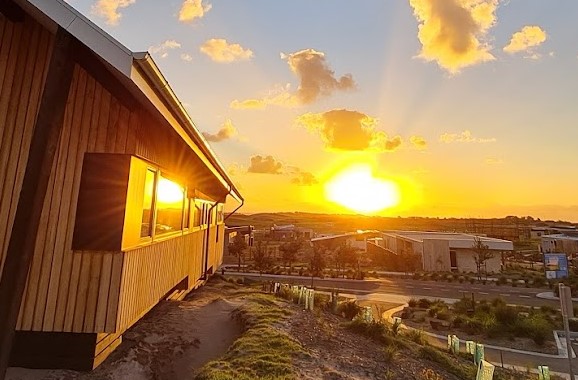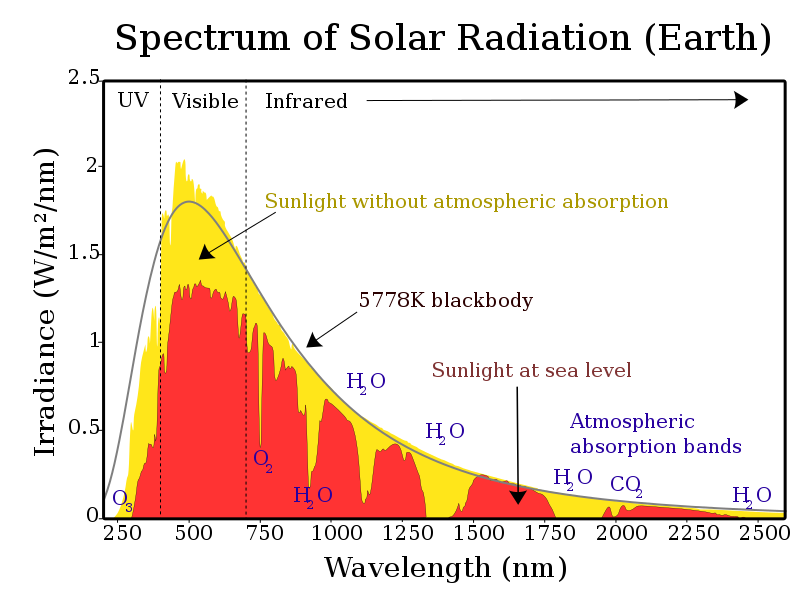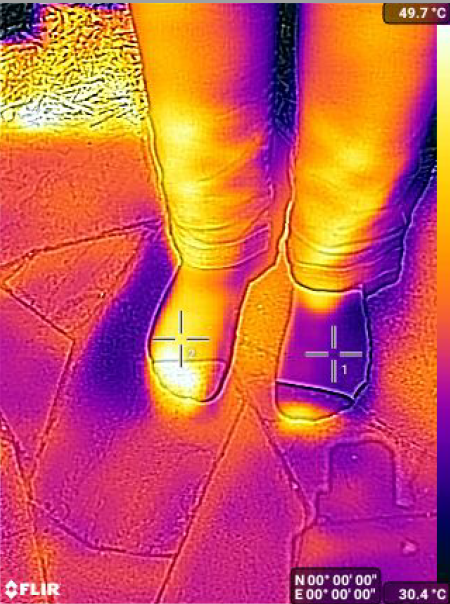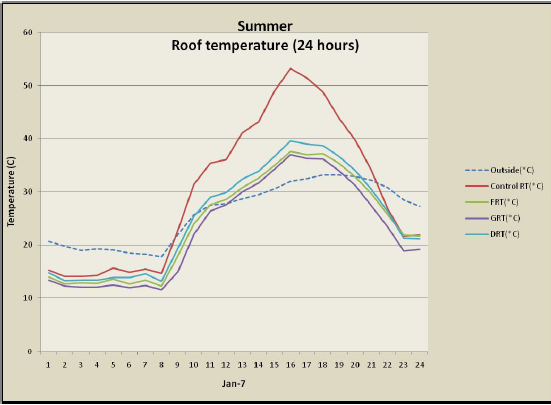I sometimes run across a misunderstanding about the nature of solar radiation. I wanted to address that here.

Richard Keech
2021-11-26
What’s the myth?
It’s well understood that sunlight carries both heat and light. However, I sometimes run across a misunderstanding about the way in which heat and light are carried by solar radiation. The misunderstanding is that heat is exclusively or mostly in the infrared part of sunlight, and that visible light doesn’t carry much heat.

Statements that demonstrate the misunderstanding are things like:
- “the paint colour will not actually change the surface temperature”,
- “green light is not hot”,
- “light and heat are separate”.
The reality
The reality is that all solar radiation is converted to heat when absorbed by a material, unless the material is a solar cell. As it relates to the spectrum diagram above, the total area depicted in red is watts per square metre of solar radiation. There is about the same amount of that solar radiation in the visible band as in the near infra-red band.
The apparent colour of an object tells you what it will absorb in the visible band, but not in the infra-red band.
The sock experiment


A simple experiment with a thermal imaging camera captures this direct solar heating of black materials compared with white materials. In this experiment, socks were used as the material, and the difference in solar heating could easily be seen.
| Spot # | Colour | Temperature |
| 1 | White | 35.4C |
| 2 | Black | 46.9C |
Hot roof colours
So how much more heat gets absorbed by different colours? To use an example of two roofs, each with Colorbond corrugated metal material, one using the colour Surfmist, and the other using the popular colour Monument.
Colorbond publish the solar absorptance of each of their colours here.


These solar absorptance values indicate the proportion of total solar radiation absorbed by the material – not just visible light.
We know that a good estimate of the midday strength of solar radiation is 1,000 watts per square metre. So, the Surfmist will absorb 320 watts in a situation where the Monument roof will absorb 730 watts. The difference is 410W, or 56% less.
So in full and direct sun, a 200m2 Monument roof will be subject to 82,000W more direct solar heating than will the Surfmist roof. So, all other things being equal, the lighter roof surface will be much cooler. How much cooler depends on a lot of other factors.
Melbourne Uni study
In 2011 the University of Melbourne did a study of the effect of cool roofs. The direct impact of solar heating for different materials is shown in the chart below. In this example, the control case is a natural metal (Zincalume) roof, and the three experimental subject cases each have a different cool roof material. The report noted (page 27) that on one particular hot summer day the difference between the cool roofs and the control roof was about 30C.

Cool roof materials
Some cool roof formulations are designed to selectively reflect more of the infrared band than conventional materials. This means that, for a given apparent colour, they will heat less in sunlight. For example the Thermoshield cool roof coating absorbs only 11% of the incoming solar radiation, so the solar absorptance is 0.11. This is compared to plain white conventional paint which absorbs between about 17% and 21%.
Should we have light roofs?
Having light colours is definitely a help with keeping a roof surface cooler in the summer sun, all other things being equal. However, bulk insulation at ceiling level is much more important and effective at controlling the flow of uncontrolled heat through the thermal envelope. In other words, if the roof is properly insulated, then the roof colour doesn’t matter so much.
The downside of lighter coloured roofs is that the reduced direct solar heating means a consequential reduction in beneficial warmth in winter. So this is why dark roofs generally make a slight overall improvement to a homes designed thermal performance in temperate climates. This is an example of a trade off between summer performance and winter performance. Insulating your roof properly, on the other hand, is a year-round good thing to do.
I sometimes recommend applying light-colour roof treatments. The classic situation where it is called for is in the following situation:
- poor existing roof insulation; and
- poor prospects to directly improve the bulk insulation; and
- known summertime thermal comfort problems; and
- existing roof has a finish that absorbs significant solar radiation.
Note that natural metal finishes absorb significant amounts of solar radiation. So, a natural metal roof is much worse in terms of solar heating than might be generally supposed.